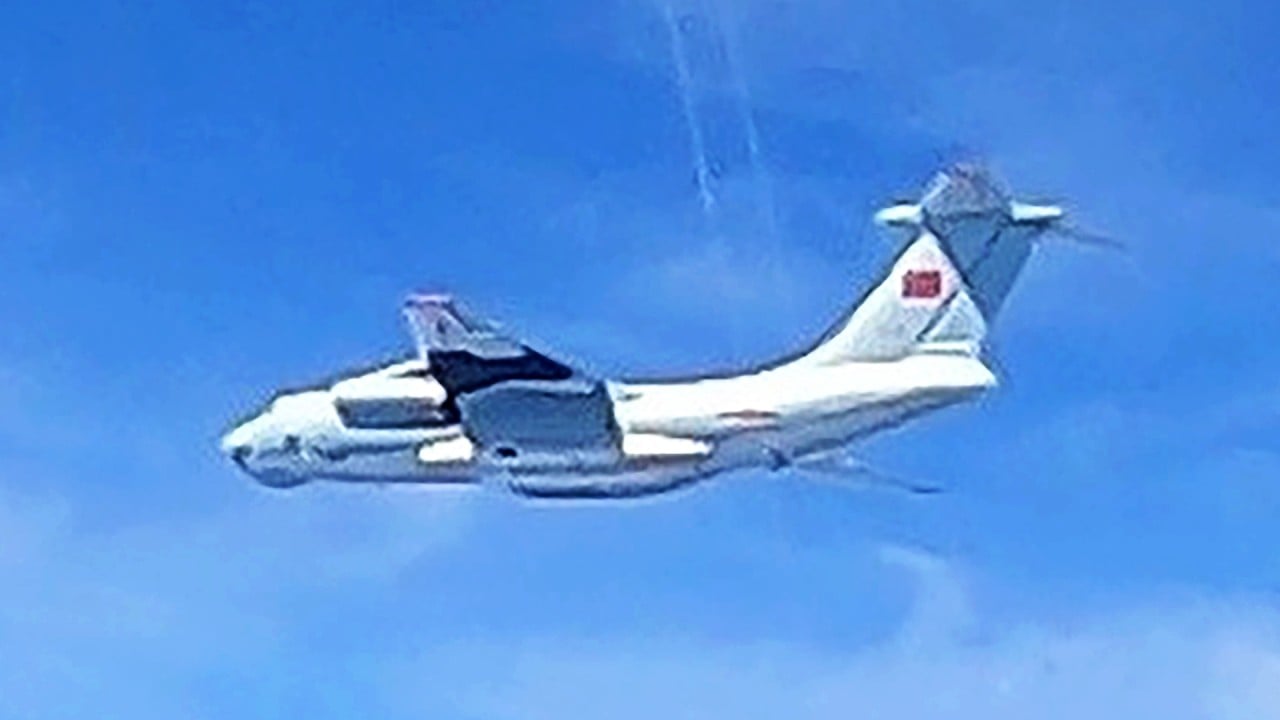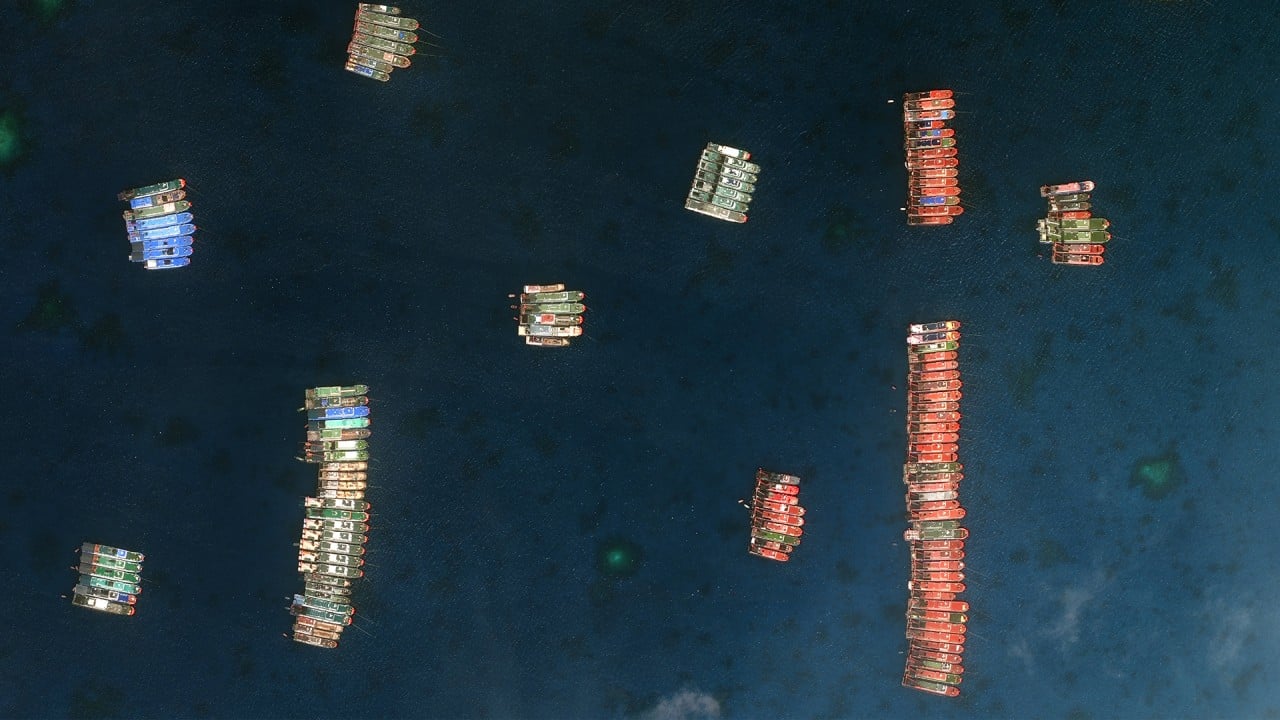
South China Sea aerial arms race catches Southeast Asia off guard
- Aukus pact focused minds on possibility of naval arms race, but bigger story may be in the skies, where Chinese fighters have buzzed edges of Malaysian airspace
- Most countries in the region are ill-prepared to take on China. Vietnam and Singapore might stand a chance, but Malaysia and the Philippines need modernisation
The trilateral pact had the potential to “provoke other powers to be more aggressive in the region, especially the South China Sea”, Ismail Sabri said following a call with his Australian counterpart Scott Morrison.
In the sharply worded statement, Ismail Sabri also warned of a renewed “nuclear arms race” that could arise out of the so-called Aukus deal.
Malaysia reacted with alarm, lodging a démarche to the Chinese envoy and characterising the incident as an “intrusion” and a “serious threat to national sovereignty” even though the planes only skirted Malaysia’s territorial air space.
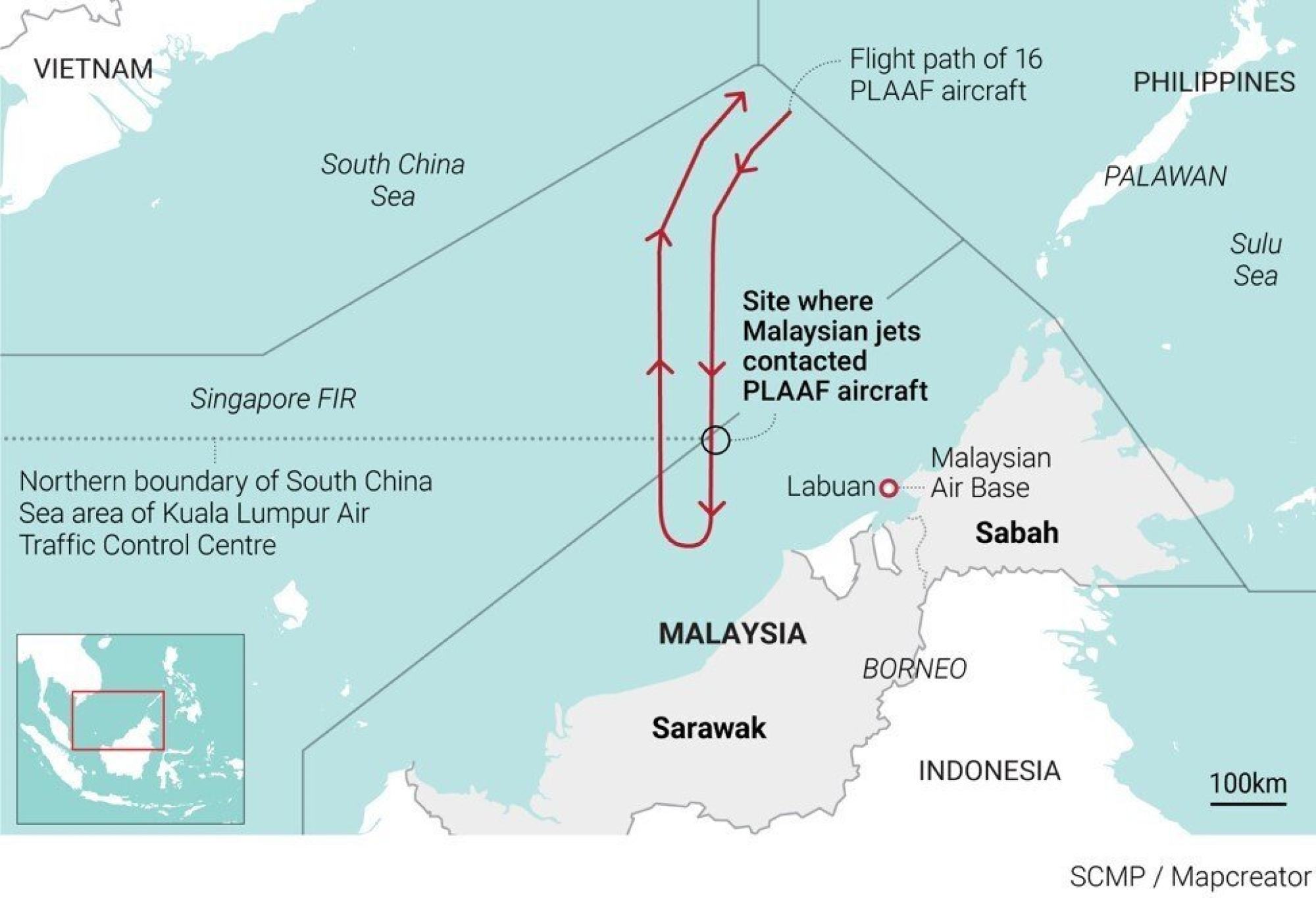
While much of the attention in the wake of the Aukus deal has been on the potential for a naval arms race in the region, This Week in Asia’s months-long analysis following the May 31 incident suggests that an aerial arms race may be equally, or even more, likely.
As suggested in a June 4 commentary by Singapore-based defence analyst Wu Shang-su, there is a possibility that the exercise was “not a one-off occurrence, but a harbinger of more frequent and sustained” Chinese air activity in the region.
For Wu, a research fellow at Singapore’s S. Rajaratnam School of International Studies (RSIS), and other leading analysts, the incident raised questions on the preparedness of the Royal Malaysian Air Force – as well as other regional air forces – for such scenarios.
The same thing could happen to the Philippines
“This is alarming in that it [the May 31 incident] could also happen to the Philippines,” said Chester Cabalza, a fellow at the National Defence University in Beijing and the US State Department. “Definitely, there is an urgent need to build up the walls in the sky to halt trespassing foreign military activities and follow international rules-based norms.”
Song Zhongping, a former People’s Liberation Army (PLA) instructor, said China’s deployment was “completely legitimate” and “reasonable”.
The Beijing-based military analyst said the deployment demonstrated China’s “determination to safeguard the sovereignty and security of its reefs”. “Through these kinds of naval and air force operations, it shows that our combat capabilities are constantly improving,” Song said.

The 16 Chinese planes involved in the May incident were identified as a mix of transport aircraft Ilyushin 1l-76s and Xian Y-20s.
But observers said future incursions could involve higher stakes, involving China’s J-10, J-11 and J-16 fighter jet formations, which could easily weigh down countries’ air defence systems.
If this is the case, Southeast Asian countries have reason to worry. Plaguing the region are multiple issues, from countries’ inertia to upgrade their defence systems to financial constraints exacerbated by the pandemic, that would slow procurements.
Some would find themselves ill-prepared to take on an increasingly assertive and aggressive China.
Surveillance comes first
Ben Ho, a research fellow at the RSIS military studies programme, said having an integrated air defence system was key to a country’s ability to protect its airspace. This refers to an amalgamation of sensors and shooters as well as other elements like battle management systems.
Sensors include radars, aerial surveillance tools and aerostats and are the “eyes” of an integrated system. They detect, identify and track an aerial contact, like a foreign plane for example.
Wu, also of RSIS, said radars were the “most crucial” asset as surveillance was the precondition for any sort of military response.
In the case of the May incident in Malaysia, its air force would not have been able to scramble jets to intercept the Chinese planes if not for its radar systems in Sabah, he said.
After an aerial contact has been picked up by surveillance systems and identified as hostile, a country’s battle management system would be triggered, said Ho. It would evaluate the threat before deciding and selecting the weapons necessary to take it down. The shooters would then be activated.
“The shooters are probably the glitziest component of [the system] as they are the ‘sexy’ capabilities that can take down an enemy aircraft,” he said. Fighter jets and ground-based systems like surface-to-air missiles are part of this category.
Different assets were used depending on the severity of the situation, Wu said. Surface-to-air missiles, for example, were a more economic choice for deterring air threats, and were used in “very serious” scenarios. But they were not as flexible as other assets, especially when responding to an unidentified aircraft.
Light fighters were deployed to deal with civilian planes and slow military ones such as transport aircraft, he said, while multirole fighters would probably be used to match other countries’ fighter jets.
Countries commonly used radars alongside either light fighters or multirole fighters to deter and tackle air threats, Wu said.
But even when countries had these assets and infrastructure in place, integration between the different capabilities was necessary to make the entire system tick, said Ho, who specialises in air and sea power.
Air defence efforts would be amplified “many times” if various components worked together, he said.
“Just as important is user competence because an integrated air defence system, owing to its complexity and intensive use of modern capabilities, needs personnel who are well and regularly trained,” Ho said.
The accidental shooting down of an Ukrainian airliner in January last year by an Iranian Tor missile system – a short-range surface-to-air system – demonstrated how “unforgiving” things could be if there was a breakdown in communications and if personnel involved were not adequately trained.
The South China Sea dispute explained
Are countries prepared?
Among the littoral states disputing China’s vast claims in the resource-rich South China Sea, Vietnam seemed the best equipped in terms of air defence, Ho said. Hanoi, he said, had a few dozen fourth-generation Sukhoi fighters and what appeared to be a multi-tier ground-based air defence system, made up of the S-300 long-range surface-to-air missile system, the Spyder medium-range apparatus, and other short-range ones.
Vietnam’s arsenal was reflected in the International Institute for Strategic Studies (IISS) Military Balance 2021, an annual assessment of countries’ defence capabilities. It reported that Vietnam had seven regiments of fighter or ground attack aircraft, equipped with different models of the Sukhoi fighters. In total, it had some 72 combat-capable aircraft.
“Vietnam’s air defence institutional knowledge should be credible as well given its Vietnam war experience,” Ho said. “The same cannot be said of the likes of Malaysia and the Philippines, whose combat experiences in recent decades have been limited to fighting non-state actors with minimal or no air power, such as insurgents and terrorists.”

Compared to Vietnam’s air force, which has about 30,000 men, the Royal Malaysian Air Force (RMAF) has half the number of active personnel, according to the IISS report. The RMAF has 43 combat capable aircraft – including Sukhois, the F/A-18 Hornet, and the Hawk MK108.
Wu said that since Malaysia’s procurement of 18 Sukhoi Su-30MKM fighters in 2003, it had not introduced any new fighter aircraft, and some ageing ones had been removed from service. It is trying to fill the void by upgrading existing fighters and there has been talk of acquiring more multi-role combat and light combat aircraft but these projects have been slow to start.
Malaysia’s surface-to-air missile systems are all short-range ones that are unsuitable for covering large spans of airspace like that traversed by the Chinese formation in May.
Wu said Kuala Lumpur had long faced challenges in developing and maintaining its air force, in part due to slow economic growth and other priorities, resulting in constrained defence budgets.
Even though there was a slight increase in the budget this year, the economic fallout from the pandemic would probably limit the country’s future defence spending, he warned. “Malaysia could struggle for more budget either from more debt or sacrificing other kinds of expenditure such as infrastructure,” Wu suggested. It could also consider second-hand aircraft, he said.
Already, there are procurement plans in the works. Malaysia’s defence ministry in June issued a notice accepting bids for light combat aircraft and trainers.
Though analysts said this was not linked to the May intrusion and was part of a longer-term plan, they suspected the episode would give Malaysia a greater sense of urgency.
Like Malaysia, the Philippines has only short-range ground-based air defence systems, but it was in an “even more abysmal situation”, said Ho, the research fellow. Even though Manila was mulling the purchase of more powerful jets like the F-16, it currently had only FA-50 light fighters.
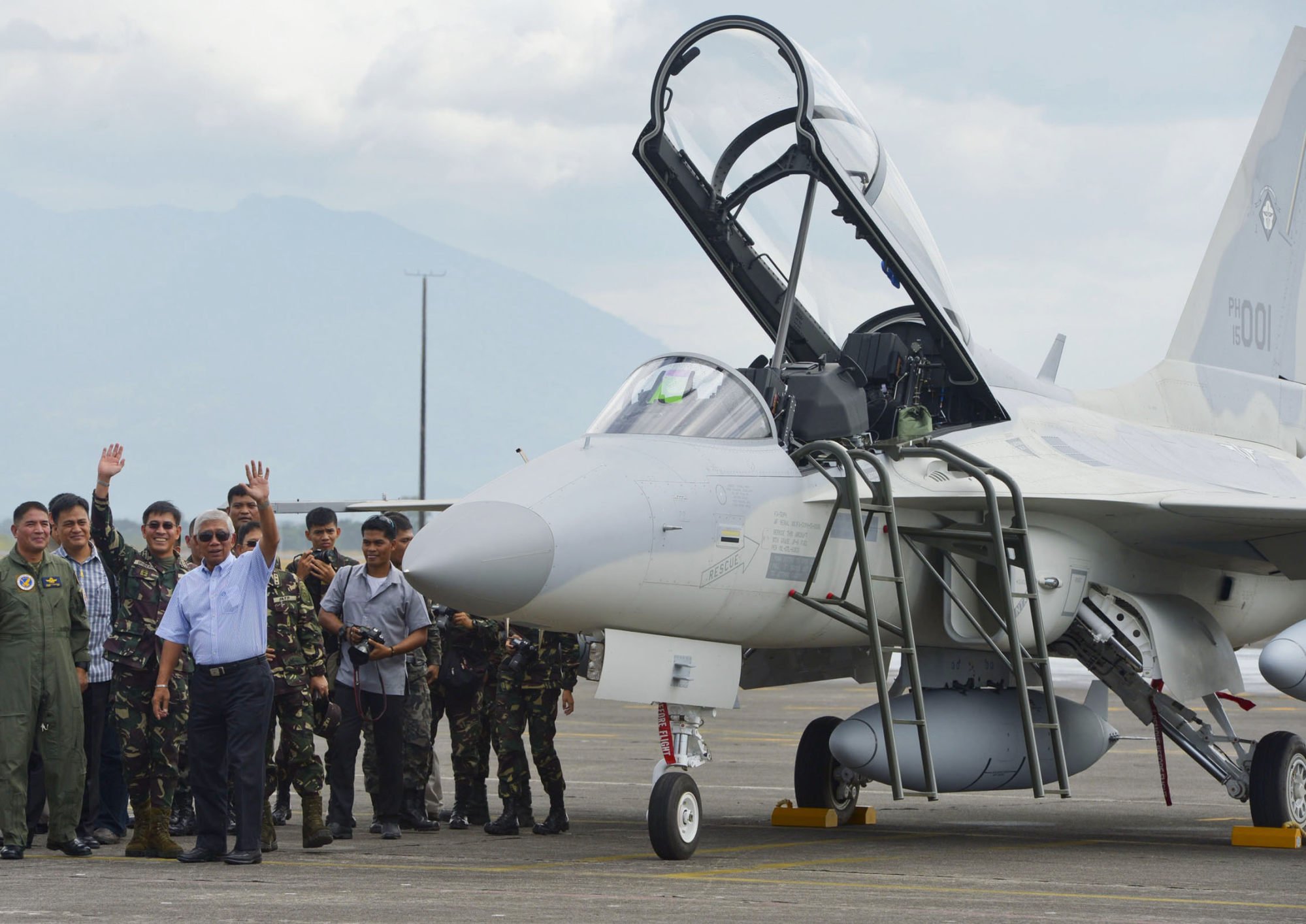
The capabilities and procurement plans of the Armed Forces of the Philippines had remained “limited” despite modest increases in its defence budget in recent years, the IISS Military Balance said. It added, though, that the Philippines had plans to acquire air surveillance radars, as well as light and medium airlift and maritime patrol aircraft in the long term.
Defence analyst Cabalza, who is also president and founder of the International Development and Security Cooperation, said that earlier overhauls in the procurement process of the Philippine government – aimed at curbing corruption – had “tremendously affected” its military spending plans.
But the modernisation of the country’s air assets, which Cabalza said was “on track”, have been nudged up the priority list, following the crash of a C-130H cargo plane that killed at least 50 people in July. Lawmakers had vowed to upgrade and modernise the Philippine Air Force, and intended to include this in the budget for next year.
While Cabalza felt that upgrading Manila’s air defence capabilities was pressing because of the “impending threat” in the South China Sea, he said equally important was training its personnel to use the assets.
The air force, he said, planned to increase its assets by 76 per cent in 2026. For now, with its FA-50 light fighters, Cabalza acknowledged that Manila was a “laggard in air power” and needed to “catch up” with its Southeast Asian neighbours.
Philippines plans South China Sea ‘logistics hub’
It was far from being able to protect itself from air incursions and threats, especially by China, he said: “At the moment, we see deficiencies in Manila’s sovereignty patrol in the skies.” The scholar suggested the Philippines invest in multi-role fighter assets, surface strikes, unmanned aerial systems and combat utility helicopters, among others, to defend its airspace.
Indonesia could be in a slightly better position. Adhi Priamarizki, a visiting fellow at the RSIS Indonesia programme, said the country – the largest archipelago in the world, which stretches some 1.9 million square km – largely depended on its fighter jets to guard its airspace. The Indonesian Air Force, better known as TNI AU, has a total of 108 combat capable aircraft.
The TNI AU has recently signed a deal for more T-50 jets from South Korea and has plans to secure the French Dassault Rafale, Priamarizki said. This would help rejuvenate its force structure, on top of the development of Indonesia’s drone squadron and radar systems.
Indonesia has been on a quest to modernise its air force, with previous estimates suggesting that only 45 per cent of its equipment is deemed operational. It has been an uphill task so far.
A daunting task
In a March commentary, Olli Pekka Suorsa, a former RSIS research fellow who is now an assistant professor at Rabdan Academy, said Indonesia’s primary combat aircraft – F-16s, Su-27s and Su-30s – came in six different variants and from three different manufacturers.
This made maintenance, repair and overhaul a “daunting task” and interoperability among the types “virtually non-existent”.
Added Suorsa: “Indonesia’s air force modernisation and fleet recapitalisation has been marred with multiple challenges, including lack of funding, lack of government commitment, as well as inefficient and highly-personalised acquisition policy.”
Priamarizki said great power competition and international politics could impede Indonesia’s procurement plans. For example, Indonesia was pressured to back away from its much-anticipated Su-35 deal with Russia over fears it could be penalised under Washington’s Countering America’s Adversaries Through Sanctions Act.
Indonesia operates a number of US military platforms and conducts regular military training with the US, and a violation of the act may jeopardise bilateral ties and even invite the risk of arms embargo, he added.
Financial constraints were another possible obstacle. The defence ministry revealed in June it was seeking up to US$125 billion in loans, a flashy sum that would help the country’s modernisation efforts into the 2040s. But the price tag has become a point of contention, with lawmakers having to defend such lavish spending, especially during the pandemic.
“There is also a debate on how to build the spending approach. The US$125 billion indicated budget-driven military spending but others believed that defence spending should be based on needs rather than driven by budget,” said Priamarizki.
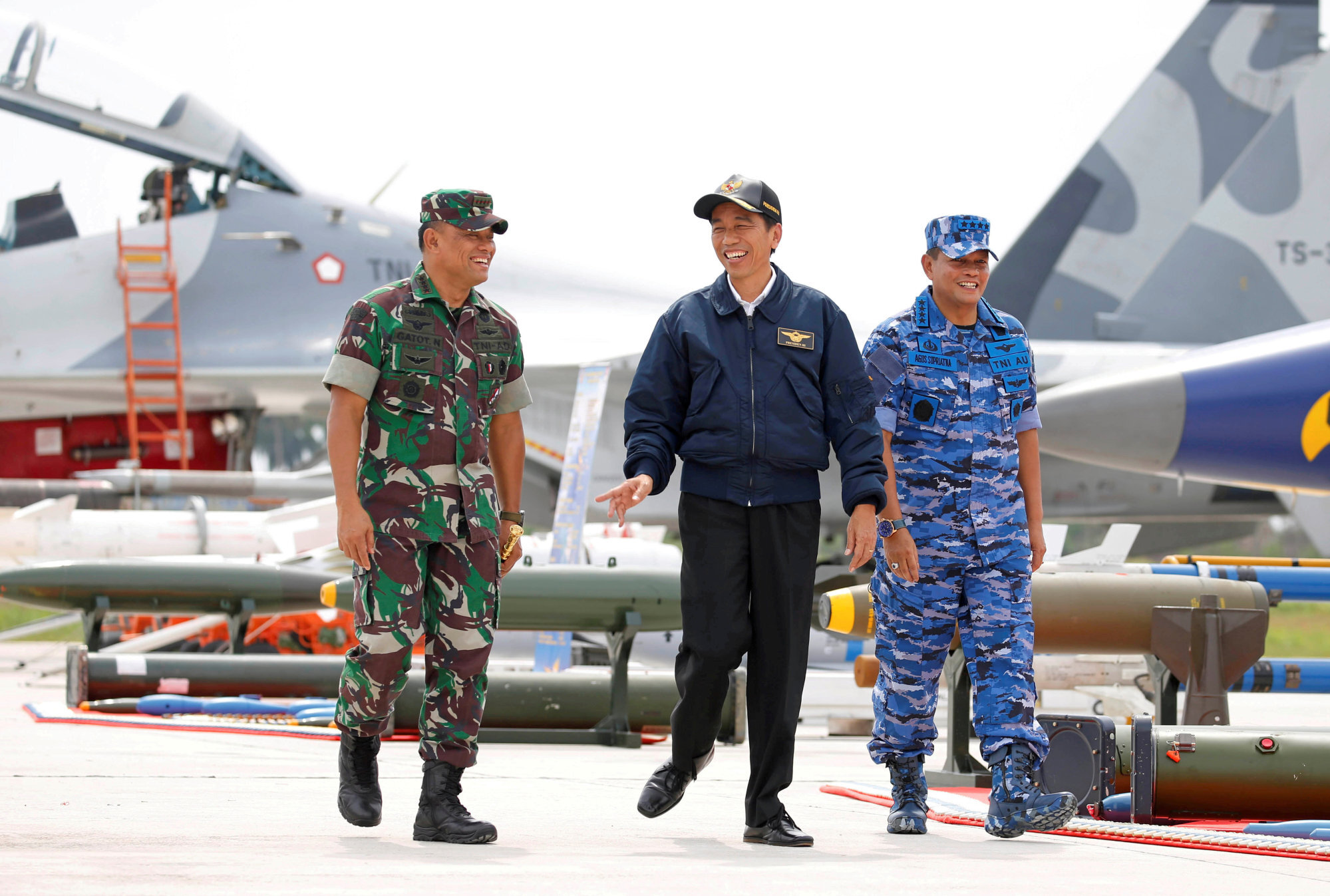
Priamarizki said that while this meant that TNI AU’s current armaments would be kept up to date, he doubted that Indonesia would be able to adopt more advanced military technology.
Suorsa in his commentary said that TNI AU needed to adopt a clear acquisition plan with strong political and financial commitment. The service, he said, should prioritise replacing older jets before expanding the force too ambitiously.
Studying the possibility of future threats from China, Wu, the RSIS fellow, said Vietnam appeared to be best equipped but its geographical location had made it most vulnerable.
Is Southeast Asia waking up to the need for unity in the South China Sea?
“Chinese air raids can come from various directions,” he explained. Indonesia, despite having fewer fighters and shorter-range assets, was farther from China and so the distance would narrow the risks.
Elsewhere, Singapore, though not a claimant state in the South China Sea, boasts the region’s most powerful air force.
The city state has 105 combat capable aircraft, according to the IISS report, with four squadrons of F-15s and F-16s. More fighter jets are on the way, such as the F-35B stealth fighter expected to enter service in 2026.
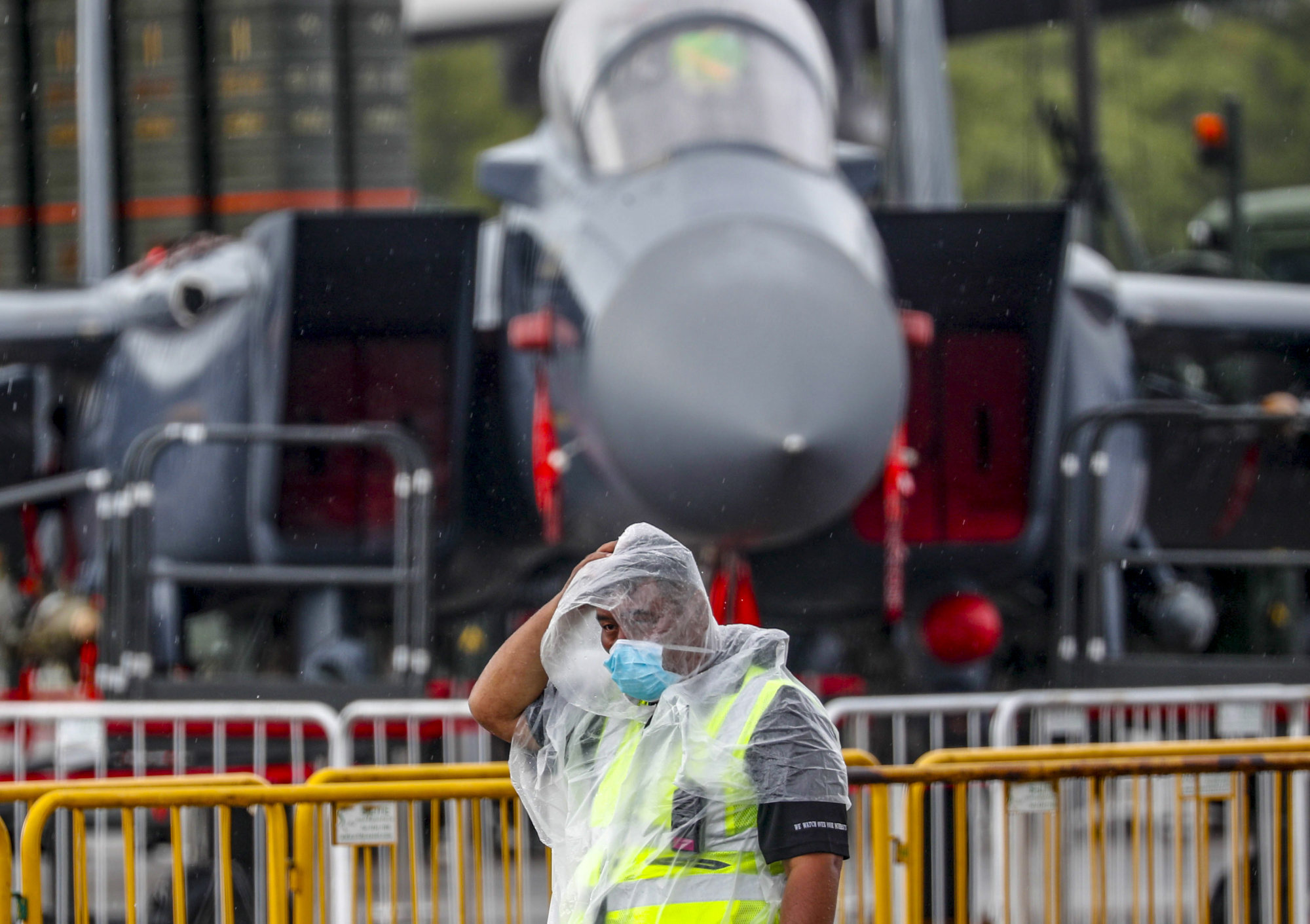
The Singapore Armed Forces were the “best equipped in Southeast Asia”, the IISS report said, adding that their primary role was to deter attacks or interference with its vital interests, namely the sea lines.
Observers have long noted that Singapore’s continued development of its armed forces was aimed at retaining its military edge over its Southeast Asian neighbours. The Chinese-majority island republic’s ties with its two Muslim-majority neighbours Malaysia and Indonesia had occasionally been “fraught with tensions over various issues”, noted Ho, the RSIS fellow.
“While the near-term regional security outlook for Singapore seems positive, the volatile nature of regional geopolitics means that the situation could deteriorate unexpectedly,” he said.
Besides its aircraft, Singapore also has a well-developed integrated air defence apparatus, known as the Island Air Defence system.
Even with these air defence systems, you can never be immune
Singapore’s defence ministry had touted it as “multilayered, networked, and intelligent”, saying it consisted of “advanced sensors, capable weapon systems, command and control elements, and decision-making tools”.
Ho said Singapore’s system had “credible” assets – including the Agile Multiple Beam radar that has a detection range of 60km and the Spyder missile system – that could respond to modern threats such as unmanned aerial vehicles.
Yet, Defence Minister Ng Eng Hen, when showcasing the set-up last December, said: “Even with these air defence systems, you can never be immune. But you can significantly reduce the level of threat so I take great comfort in that.”
Analysts agreed. For example, Ho said the 2020 Nagorno-Karabakh war, an armed conflict between Azerbaijan and Armenia, offered some lessons for Singapore. Noting how Azeri drones went undetected by Armenian radars, he suggested the city state look into acquiring dedicated air defence platforms with electronic warfare capabilities.
Another takeaway from the conflict was that a country’s military personnel had to be competent and combat ready. In Singapore’s case, this could mean holding further drills to test its integrated system and its men at the same time, especially newer procurements such as its Aster 30 missile system that came into force in August last year.
China’s military might
China’s flexing of its military muscles in the skies, in the case of the May incident near Malaysia, is in line with its growing air defence capabilities.
The People’s Liberation Army Air Force, or PLAAF, has been busy with a series of upgrades and new deliveries.
According to the IISS Military Balance, images of the PLAAF’s H-6N bombers, an upgraded variant of the H-6 which was first flown in the 1950s, emerged in October last year showing it carrying a large air-launched ballistic missile system. This could give the Chinese air force a long-range stand-off offensive air capability.
The report added that it was also working to develop a replacement for the H-6 altogether, possibly named H-20, and that this would “very likely” be equipped with nuclear weapons.
“PLAAF combat production currently seems set to continue with the trio of J-20, J-16 and J-10C types,” it added. “At the same time, older types continue to be replaced, and the remaining Cold War-era J-7 and J-8 designs now account for only around 25 per cent of the PLAAF’s 1,500-strong tactical combat aircraft inventory.”
More J-16 and J-20A aircraft were delivered and notably in development was the J-20B variant, which the IISS said “may become the first version to be fielded in operationally significant numbers”.
The PLAAF also grew its Xian Y-20 fleet of transport aircraft – the ones that were deployed near Malaysian airspace. “The air force has effectively doubled its heavy-transport fleet in the last four years,” the report noted.
Observers expect some of these new aircraft will be seen over the South China Sea in the medium term.
Song, the former PLA instructor, said an increase in Chinese military activity in the disputed waters was expected – even “imperative” – as Beijing sought to guard its “core interests” in the seas and as its defence capabilities improved.
Li Nan, a visiting senior research fellow at the National University of Singapore’s East Asian Institute, said that while it was crucial to observe China’s military exercises, a more important indicator would be if Beijing began “institutionalised, permanent deployment of air capabilities” in the region.
Currently, the three new airfields that China has built in the Spratly and Paracel Islands do not have such deployments. “Maybe China doesn’t want to further alienate the Southeast Asian countries or maybe the new runways have quality problems,” he suggested.
Ian Storey, a senior fellow at the ISEAS – Yusof Ishak Institute, suggested that with China’s growing military might, its move to fly its aircraft to Malaysia in May was a signal to the Southeast Asian claimants that “all the contested atolls are now within reach”.
“They used transport aircraft on that occasion to drive home the point but they are also capable of sending long-range bombers and, with the aid of aerial refuelling, fighter aircraft,” said Storey, who researches maritime security in the South China Sea.
“We’ll definitely see more of these kinds of incidents in the future.”


